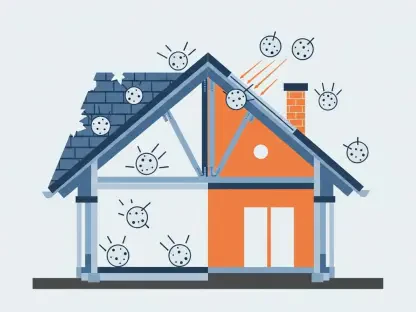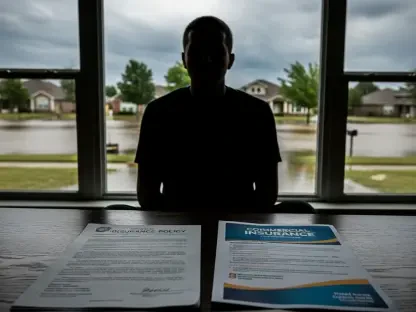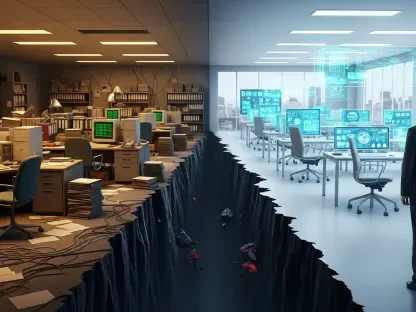I’m thrilled to sit down with Simon Glairy, a renowned expert in insurance and Insurtech, whose deep knowledge of risk management and AI-driven risk assessment has made him a leading voice in the industry. Today, we’re diving into the pressing issue of rising fire risks associated with solar panels, a topic gaining attention as renewable energy adoption surges. Our conversation explores the alarming trends in solar panel-related fires, the underlying causes, the challenges for insurers, and practical steps to mitigate these risks. Let’s get started.
Can you walk us through the recent findings on solar panel fires in the UK and what they reveal about the scale of this issue?
Certainly, Abigail. Recent data from a Freedom of Information analysis highlights a concerning trend: in 2024, fire services responded to 171 solar panel fires across the UK, a 60% increase since 2022. What’s striking is that this rise outpaces the growth of new installations, which went up by just under 30% over the same period. This discrepancy suggests that the problem isn’t just about more systems being installed—it’s about underlying issues in how these systems are set up and maintained, posing a real challenge for risk management.
What do you see as the primary factors driving this sharp increase in solar panel fires?
The data points to a few key culprits. First, installation quality is a major factor—when systems are installed by uncertified or inexperienced contractors, errors in wiring or component placement can create fire hazards. Second, poor maintenance plays a huge role; systems that aren’t regularly checked can develop faults, like degraded wiring or dust buildup, which can ignite under heat stress. Lastly, specific components like inverters and the panels themselves are often the starting points for fires because they generate significant heat and are sensitive to faults. These issues combined create a perfect storm for incidents.
I understand most of these fires are happening in residential properties. Why do you think that’s the case?
That’s right—nearly 100 of the reported fires in 2024 were in residential settings, compared to just 27 in commercial buildings. I think this largely comes down to oversight. Homeowners often lack the rigorous inspection schedules or professional maintenance that commercial properties might have in place. Plus, residential installations are sometimes done on a budget, leading to corners being cut with uncertified installers. The stakes are also different—homes don’t always have the same fire suppression systems or risk protocols as businesses, making prevention and response much harder.
How are these rising fire risks impacting the insurance industry, particularly for property underwriters?
The impact is significant and multifaceted. Insurers are seeing increased exposure to direct property damage from these fires, as well as liability claims if negligence, like poor installation, is involved. There’s also growing concern about complex scenarios, especially with commercial properties, where fires can lead to business interruption or disputes over warranties and subrogation. Larger solar systems with battery storage add another layer of risk—batteries themselves have been linked to thousands of fire incidents, complicating claims and payouts. It’s pushing insurers to rethink how they assess and cover these properties.
What practical steps can property owners take to minimize the risk of solar panel fires?
There are several actionable measures. First, always use MCS-accredited installers—certification ensures a baseline of quality and safety in the setup. Annual maintenance checks are also critical to catch issues like wear and tear before they escalate. Property owners should ensure their systems have accessible fire isolation switches to cut power in an emergency. Additionally, post-storm inspections are vital; storms can damage panels or expose wiring, creating hidden fire risks. Taking these steps can drastically reduce the likelihood of an incident.
How should insurance underwriters and brokers adapt to the growing prevalence of solar panels in both residential and commercial settings?
Adaptation is key as renewable energy becomes mainstream. Underwriters and brokers need to revisit policy wordings to explicitly address solar-specific risks, ensuring coverage reflects the potential for fire damage or related liabilities. Conducting detailed risk surveys for properties with solar systems is also essential—these surveys can identify vulnerabilities like outdated components or inadequate safety measures. By proactively managing these factors, insurers can better protect their clients and maintain affordability in coverage as adoption grows.
Looking ahead, what is your forecast for the future of solar panel risks and the insurance landscape surrounding them?
I anticipate that as solar adoption continues to accelerate, we’ll see both challenges and opportunities. Without improved standards for installation and maintenance, fire risks could keep climbing, putting pressure on insurers to raise premiums or limit coverage. However, I’m optimistic that advancements in technology—like smarter monitoring systems and AI-driven risk assessment—will help identify issues before they become disasters. I also expect tighter regulations and industry collaboration to drive safer practices. Ultimately, balancing sustainability goals with risk discipline will be crucial to ensuring solar energy remains a viable and insurable option for the future.









